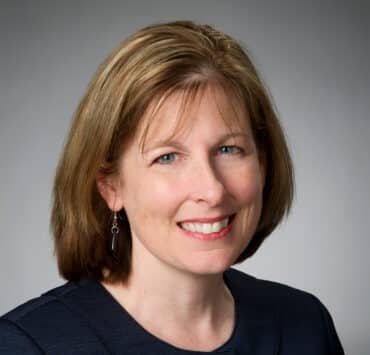|
Getting your Trinity Audio player ready...
|
Only one thing prevented Amy Sheldon from pursuing a career in journalism and following in the footsteps of famed Washington Post investigative reporters Bob Woodward and Carl Bernstein. “I hated writing to deadline,” she says with a laugh.
But a position as assistant editor at Pest Control Technology magazine began her journey from newspapers to computers to benefits. She credits her mother with instilling in her the self-confidence to do anything she wanted. While that may sound cliché now, this was the 1970s, and possibilities for women were limited. “I remember newspapers split the want ads between jobs for men and jobs for women,” she says.
“I moved away from journalism into computers and ended up as a network manager. You didn’t find too many women in computer science then,” she says. “I came to Case Western Reserve University to perform a temp job working on a survey they were conducting. I impressed the VP of HR enough that they said, ‘We have a position opening in benefits you should apply for.’ When I said I didn’t know anything about benefits, they said, ‘We can teach you benefits. You can handle the faculty.’”
This year marks Sheldon’s thirtieth anniversary of working in benefits—mostly at Case Western Reserve. “I was the faculty benefits specialist when I started,” she recalls. “I initially handled the faculty retirement plan. After I started, there was a major change in the retirement plan which required every faculty member to reenroll. They were forced to deal with me. My predecessor didn’t have a good reputation, so a lot of faculty members weren’t happy with HR. I like to think I changed their minds.”
“The high point of my job is being able to help someone through an issue.”
Amy Sheldon
Sheldon did leave Case Western Reserve in 2005 to serve in the provost office at the University of Akron. But in what she jokingly calls “every ex-employee’s dream,” she was contacted by Case Western to return.
In 2019, benefits was split off and she became Case Western Reserve’s director of benefits administration. Her philosophy is simple: “We’re here for the benefit of all the employees.”
Sheldon’s colleagues outside the university have taken note of her attitude and efforts. “For the faculty and staff at CWRU, Amy has been an invaluable resource,” says Rich Wallack, VP of sales for Medical Mutual. “She’s knowledgeable, helpful, and she knows just about every employee by name. It’s clear that they’re her top priority.”
There’s one drawback to being director of the department, she says: she has fewer opportunities to consult one-on-one with employees. “I like people,” she says. “The high point of my job is being able to help someone through an issue. Pre-COVID, people used to be wary of walking down the hallway in our building because I used to tackle them and say, ‘Have you signed up for retirement? You really need to be putting money aside; this is the best thing you can do for yourself.’”
Sheldon, a northeast Ohio native, will be retiring this summer. As she looks back on the three decades in her career, she recalls some of the societal and cultural changes that have impacted her department.
One of the biggest, she said, is the explosion in healthcare costs. “It’s been interesting to try and keep our programs robust, but still affordable,” she says. If she had a dime for every time someone told her, “I remember when benefits didn’t cost anything and there were no deductibles,” she could probably retire today.
When it comes to changes in benefits for LGBTQ families, she says, “Case Western Reserve has always been on the cutting edge. We were one of the first institutions in Ohio to add domestic partner benefits. I actually ended up in charge of that because I was the only one who could figure out how to set up the taxing appropriately. That’s where my computer background came in.”
Most recently, the university’s biggest challenge has been the pandemic. “We are a major research institution,” she says. “You can’t run a lab or train nursing and medical students remotely. Our head of safety went on television to announce we have testing kits in vending machines for students and staff. That’s a unique way to get them out to people. Overall, our vaccine compliance is roughly 98 percent.”
As the pandemic continues, her department’s communications have transitioned online. “We’ve set up webinars and our orientation for new hires has gone completely online,” she says. “One of the good things put into place is a tool in which you can plug in basic information about salary and healthcare needs and the program will do an analysis on how much each one of our retirement plans will cost.”
“My predecessor didn’t have a good reputation, so a lot of faculty members weren’t happy with HR. I like to think I changed their minds.”
Amy Sheldon
Sheldon has a succinct to-do list for 2022: She is training her successor. Her last day is June 3.
Her thirty years in benefits have served her well. “Every time I got a raise, I raised the amount I put aside,” she says. “And now I am able to retire as I turn sixty-five and have more than enough to enjoy myself. I’m planning many hiking trips for the second half of the year.”
A lesson she passes on to new hires and employees is to use benefits wisely. Sheldon practices what she preaches: she is not taking any time off before her retirement date. “What can I say?” she says. “I want a big vacation payout.”

